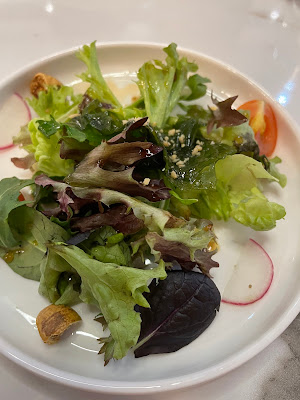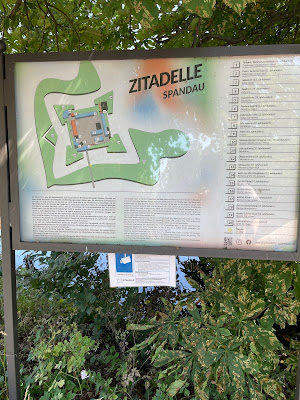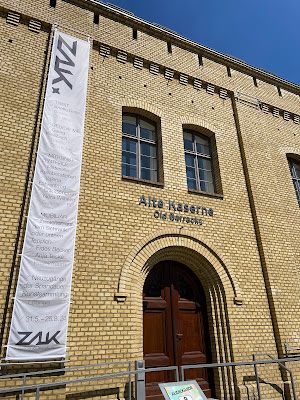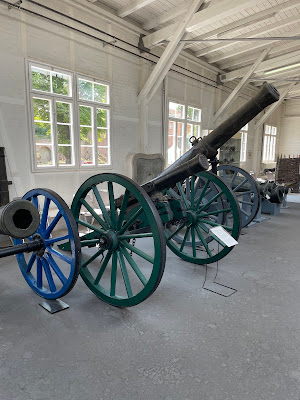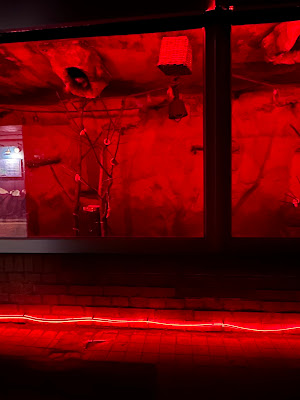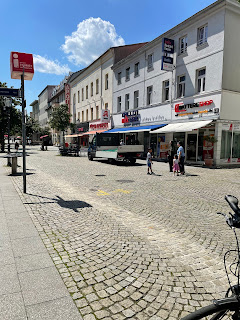Berlin - Today, we took a train ride out to Potstdam town and it was an 1.5hr ride. This is an UNESCO site under the name of Palaces and Parks of Potsdam and Berlin is a huge collection of important palaces and parks located mostly in Potsdam.
Charlottenhof Palace
This was the summer residence of Crown Prince Frederick William, who later became King Frederick William IV. Charlottenhof Palace is actually a remodeled farmhouse converted into the neo-classical villa you see today
Apart from the UNESCO award, Potsdam also has a great history in filmmaking. In fact, Potsdam is the birthplace of the film as we know it. Images first started moving in the city of Babelsberg, which is now a part of Potsdam. The world’s first silent film was made here in 1912.
Chinese House in Sanssouci Park
The Chinese House is a garden pavilion in Sanssouci Park. The pavilion's exterior is distinguished by life-sized gilded figures placed around the building individually or in groups. Chinese musicians and tea drinkers, dressed in fairytale-like apparel, are represented.
Sanssouci Palace
Built in the mid 1700s, Sanssouci Palace was built as a summer residence for the king, Frederick the Great. Beautiful gardens and sulpture surrounding this grand palace.
We had our sandwiches for lunch at this park.
 |
| Huge fountain in the garden |
 |
| The grand palace |
 |
| Magnificant sulptures surrounding the palace |
Brandenburg Gate at Portsdam
Lesser known and popular than the Brandenburg gate in Berlin. The Brandenburg Gate is the most splendid city gates in Potsdam and is the culmination of the Potsdam promenade. Friedrich II had this impressive city gate built after the Seven-Year´s War in 1770/71.
Between 1756 and 1763, Prussia and Austria fought against each other in the Third Silesian War. After seven years of war, Silesia could be added to the Kingdom of Prussia. King Frederick the Great decided that his victory should be commemorated with a triumphal arch.
Dutch Quarter @ Potsdam
The Dutch quarter is characterised by small shops, cafés and bars that attract visitors in this part of town. The story of the district starts with King Frederick William I who urgently needed qualified craftsmen for an extension of the garrison town.
 |
| very quaint dutch looking houses |
King Frederick William I made an overture to the neighbouring country of The Netherlands where he wanted local Dutchmen to feel a sense of being at home whilst in Potsdam. To prove the point, he then had 130 brick houses — in the typical Dutch style — built in this part of town in the middle of the 18th century. Even today, there is a lively atmosphere that celebrates this forward-thinking concept and welcoming of cultures.
 |
| Candy store |
 |
| Lindt chocolate |
 |
| IKEA |
 |
| Church of St Peter and St Paul |
 |
| small outdoor market |
 |
| Fresh fruits stall |
 |
| clothing stall |
After spending hours at Potsdam, we return to our hotel to rest and have lunch. We have a reserved tour of the Reichstag at 5pm.
Reichstag Building tour
Reichstag building in Berlin that is the meeting place of the Bundestag (“Federal Assembly”), the lower house of Germany’s national legislature. One of Berlin’s most famous landmarks. We had to bring along our passport as identification for entry into Reichstag building. It was high security because this is used during German Parliament. Tours are conducted only when parliament is not in session.
We had to wear our tags and soon a tour guide arrives to bring us on a guided tour and education of the Reichstag building. She was a serious looking tour guide - she asked questions and expected someone to answer the question. Questions varies about German parliament, what are the different political partities, etc. We were attentive and much to absorbed.
Reischstag is no longer used except for this building; and was explained by her that Reich is rarely used and is taboo in modern Germany because of Nazi Germany. The Third Reich, meaning "Third Realm" or "Third Empire", referred to the Nazi claim that Nazi Germany was the successor to the earlier Holy Roman Empire (800–1806) and German Empire (1871–1918).
During retoration and renovation of the Reichstag building, the plaster were removed and beneath lays graffiti which were kept and restored to original. These were written by Soviet soldiers when they storm Berlin and took hold of the Reichstag as a symbol of the 'Fall of Nazi Germany'.
After this, we returned our neck tags and adjourned to the Parliament roof top for a 360 view of the city.
 |
| German Flag |
 |
| Parliament dome that was closed for renovation |
This was closed for renovations but if it was open, we will be able to take a closer look and walk round the dome to have a higher elevation view of the city.
 |
| EU Flag |
 |
| Reichstag Building |
It was a good 90 minutes tour and worth the time.
